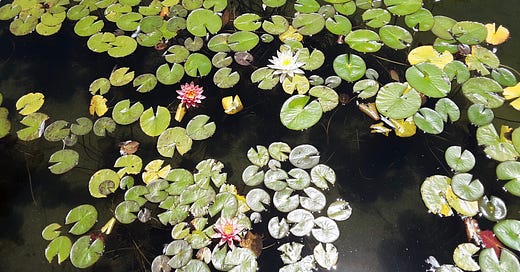I believe that the "buddhist" paradigm for well-being and right living is one of the very best available to us. Thousands of volumes have been written on this subject in many languages with widely divergent perspectives. This can make it difficult to grasp the essential elements. Following Einstein’s dictum that “Things should be as simple as possible, but no simpler,” I have tried in this essay to boil down this profound philosophy to a few core concepts and practices for ease of entry.
The life story of Gautama Siddhartha (aka Buddha) is usually told within the classic structure of the 3-act drama:
Innocence and disillusionment
Suffering and the search for a cure
Enlightenment
His mythic story resonates deeply with our own experience of life, its joys and suffering and lessons learned.
The hero’s journey
The first step to the knowledge of the wonder and mystery of life is the recognition of the monstrous nature of the earthly human realm as well as its glory, the realization that this is just how it is and that it cannot and will not be changed. Those who think they know how the universe could have been had they created it, without pain, without sorrow, without time, without death, are unfit for illumination. — Joseph Campbell
Siddhartha was a young prince who lived a lavish hedonistic lifestyle. Upon discovering that everyone is destined to die, he fell into despair and fled his privileged life. He pursued the ascetic path by renouncing all pleasure in pursuit of release from his suffering. Upon discovering that years of wandering and self-denial had brought him no closer to the relief he sought, he sat and contemplated the human condition and the sources of his suffering with an open and curious mind.
He concluded that the source of his suffering was his attachment to things that are impermanent: youth, wealth, pleasure, life itself.
He formulated an effective healing practice through the cultivation of three beneficial qualities of mind and character:
Being/staying in the real immediate NOW without judgment
Maintaining an optimal degree of separateness (not too close/far) from people, things and one’s own thoughts/emotions
Practicing generosity and kindness toward all living beings
The Way
Traveler, there is no path. The path is made by walking. — Antonio Machado
Siddhartha’s life journey echoes our own. We begin life (if we are fortunate) with a period of blissful ignorance of the “monstrous nature of the earthly human realm”. Then sooner or later (and for many, much too soon and too often), something happens that shatters our belief in a safe and just world.
Depending on the severity of those traumatic events, many fall into a state of despair and fearfully withdraw from engagement with the world. They sacrifice life’s pleasures in a desperate attempt to protect themselves from further pain. Many who take this path of renunciation discover that it creates its own brand of endless suffering, and are driven by their pain to find … a better way.
The Buddhist practice of cultivation is safe, effective, accessible and affordable for all people. Would that we could say the same about all the drugs and treatments on the market today.
⬇️ ⬇️ ⬇️





I agree with Michael, a very nice summary. If I were to add one thing, it would be the "how" of staying in the now. Many Buddhists will suggest meditation. But at the heart of meditation is "just sitting," something so basic that we sometimes refuse to believe it will help. Our society sets us up to be prepared to respond to whatever happens; "just sitting" is the opposite. Things happen, we notice them, and we let them go. Following the breath is an easy way of having something to return to other than whatever it is that just happened. An astonishing moment for me -- I'm a dilettante at Buddhism, as in much else -- was seeing the "monkey mind" with which I usually respond to the day's events. Something happened, do something about it! Wait, look over there! Something else happened! Better respond. "Just sitting" is an antidote to a self-administered poison we are often addicted to.
I think you made a very nice summary!